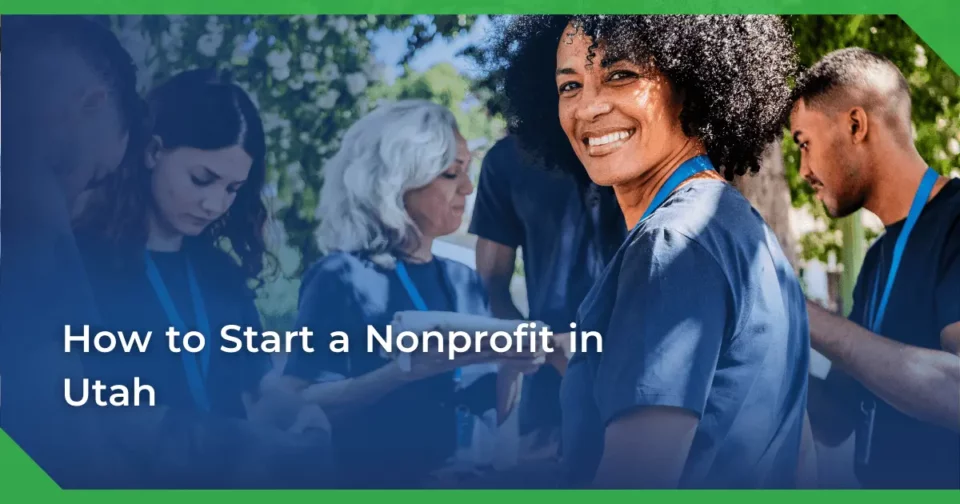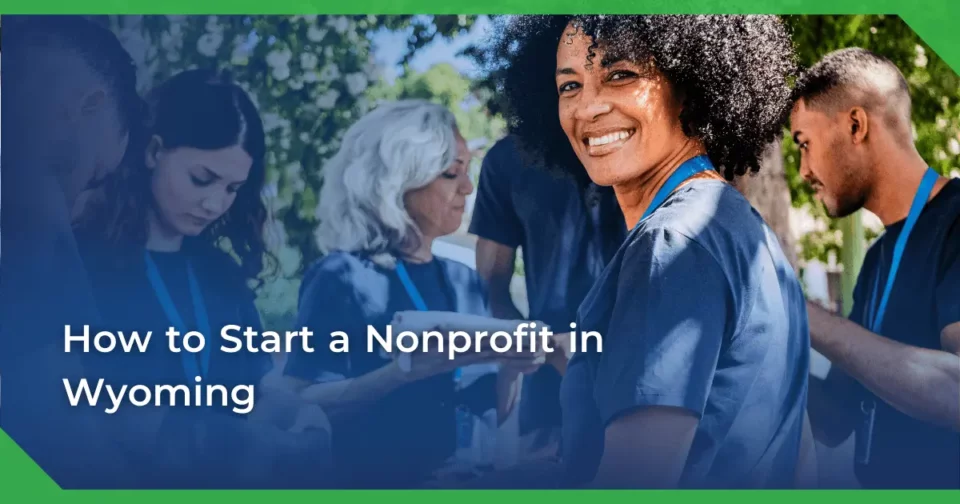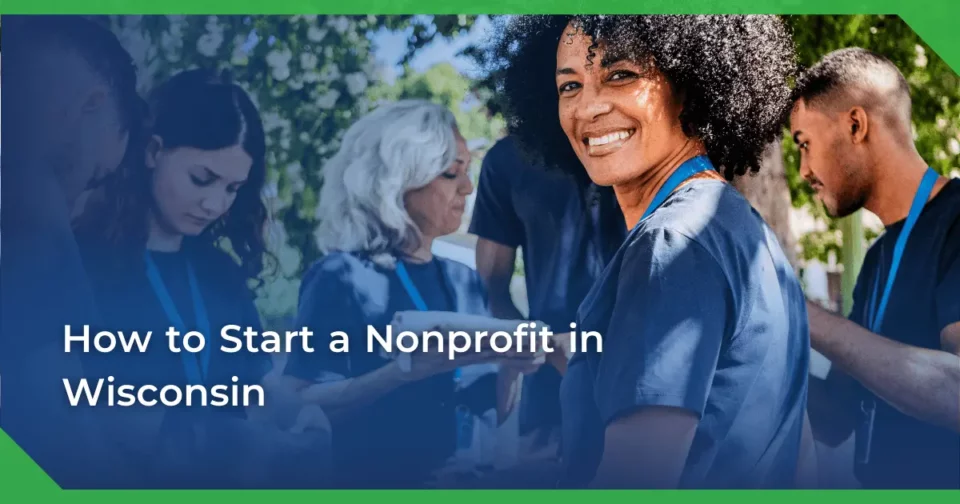
How to Start a Nonprofit in Ohio: A Beginner’s Step-by-Step Guide
August 26, 2025
How to Start a Nonprofit in Rhode Island: A Step-by-Step Success Guide
August 26, 2025How to Start a Nonprofit in Oklahoma: A Founder’s Step-by-Step Guide
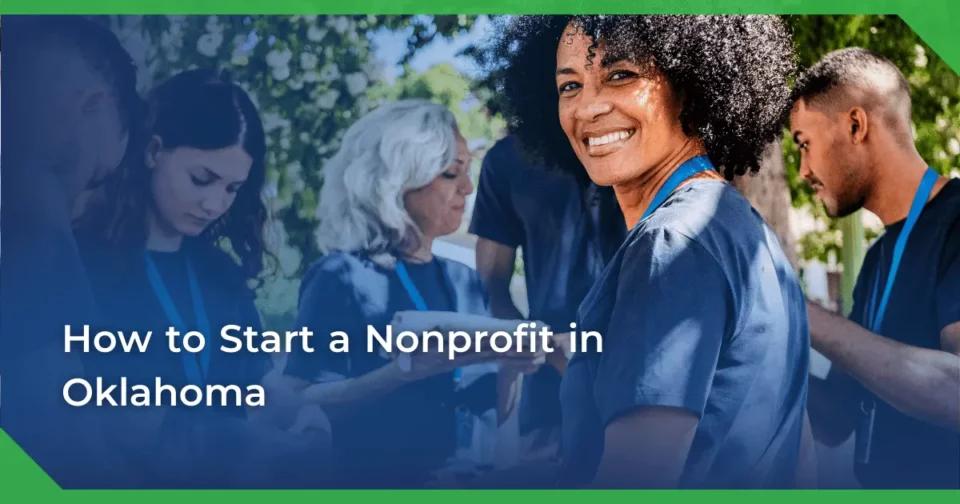
Ready to turn your passion for change into action? Starting a nonprofit in Oklahoma might seem daunting at first, but with the right guidance and expert support, you can navigate the process successfully!
Transforming your vision into a legally recognized organization takes more than just good intentions. You need to understand specific state requirements, federal regulations, and organizational best practices. Fortunately, breaking down this journey into manageable steps—and having experienced specialists guide you through each one—makes the entire process much less overwhelming.
Whether you’re passionate about education, healthcare, environmental conservation, or community development, Oklahoma offers a supportive environment for nonprofit organizations. The key is knowing exactly what to do and when to do it, while ensuring every requirement is met correctly the first time.
In this comprehensive guide, we’ll walk you through every step of creating your nonprofit – from choosing the perfect name to securing your tax-exempt status. Additionally, services like Labyrinth, Inc.’s 501(c)(3) filing assistance can help streamline the more complex aspects of the process, combining expert service from Nonprofit Compliance Specialists with 15+ years of experience with modern technology to handle your nonprofit’s registrations. With their 100% IRS approval guarantee and end-to-end support from incorporation through federal approval, you can proceed with confidence. After all, the sooner you complete the formalities correctly, the sooner you can focus on your mission!
Ready to embark on this rewarding journey? Let’s dive into the step-by-step process of establishing your nonprofit in Oklahoma.
Step 1: Choose a Name and Define Your Mission
Selecting the perfect name for your Oklahoma nonprofit is the foundational step in your organization’s journey. This name will become your public identity and represent your cause for years to come, so it’s worth taking time to get it right. Expert guidance during this phase helps ensure you choose a name that’s both meaningful and compliant with state regulations.
Check name availability with Oklahoma Secretary of State
Before falling in love with a name, verify its availability through the Oklahoma Secretary of State’s business entity search tools. Oklahoma law requires your nonprofit’s name to be distinguishable from other registered businesses, including those that existed during the previous three years, trade names, and fictitious names.
The Oklahoma Secretary of State (405-521-3912, sos.ok.gov) offers two convenient search options:
- The Business Entities Search for checking existing businesses
- The Name Availability Search for preliminary availability checking
These searches help ensure your chosen name complies with state requirements. Moreover, Oklahoma has specific naming guidelines for nonprofits that you must follow. While conducting your search, remember to exclude identifiers like “nonprofit” or “corporation” for more accurate results.
Write a clear and specific mission statement
Your mission statement serves as the heart of your nonprofit, defining why your organization exists and what it aims to accomplish. An effective mission statement should be:
- Concise (ideally 10-15 words)
- Clear and specific about your purpose
- Action-oriented and written in active voice
- Emotionally compelling
- Accurate to your current activities
Furthermore, a well-crafted mission statement will guide your strategic planning, inspire staff and volunteers, inform decision-making, and attract potential supporters. Consider gathering input from your founding team to identify overlapping values and shared vision.
When drafting your mission statement, reflect on real success stories that exemplify what your organization looks like at its best. This process helps identify patterns worth including in your statement. Essentially, your mission statement should answer the fundamental question: “Why does our organization exist?”
Reserve your nonprofit name (optional)
Though not required, reserving your chosen name provides peace of mind while you prepare your incorporation documents. In Oklahoma, you can reserve an available name for 60 days by filing an Application for Reservation of Name (SOS Form 0034) with the Secretary of State.
The reservation process costs $10 and can be completed online through the Oklahoma Secretary of State’s website or by mail. However, it’s important to note that Oklahoma name reservations cannot be renewed after the 60-day period expires.
Labyrinth’s 501(c)(3) service provides 1-on-1 support from experienced Nonprofit Compliance Specialists who can certainly help you navigate the more complex aspects of the nonprofit formation process, ensuring your organization is set up correctly from day one.
Once you’ve secured your name and defined your mission, you’ll be ready to move on to forming your board and drafting bylaws—crucial steps in establishing your organization’s governance structure.
Step 2: Form Your Board and Draft Bylaws
Building a strong foundation for your Oklahoma nonprofit requires assembling a dedicated leadership team. Your board of directors will serve as the backbone of your organization, providing governance, oversight, and strategic direction. With proper guidance, you can establish a board structure that meets both state requirements and positions your nonprofit for long-term success.
Recruit at least three unrelated directors
Oklahoma law requires your nonprofit to have at least three board members who are not related by blood or marriage. This requirement helps ensure independent decision-making and prevents conflicts of interest. The IRS also requires at least three directors for 501(c)(3) organizations, so we recommend following this standard even if Oklahoma allowed fewer.
When recruiting board members, look for individuals who:
- Bring diverse skills, backgrounds, and expertise
- Share passion for your mission
- Possess experience in relevant fields (accounting, legal, fundraising, etc.)
- Can commit time to board meetings and activities
Many successful nonprofits use a “board composition matrix” to identify gaps in skills and representation. This strategic approach allows you to focus recruitment efforts where your board needs strengthening. Subsequently, once you’ve identified potential candidates, provide them with clear information about expectations and responsibilities.
Define roles and responsibilities
Board members have three primary legal duties that form the cornerstone of nonprofit governance:
- Duty of Care – Making informed, prudent decisions through active participation
- Duty of Loyalty – Putting the organization’s interests above personal interests
- Duty of Obedience – Ensuring compliance with laws and adherence to the mission
Your board should select officers to handle specific responsibilities. Typically, this includes a President/Chair who leads the board, a Secretary who maintains records and meeting minutes, and a Treasurer who oversees financial matters. In fact, most states prohibit the same person from serving as both President and Secretary simultaneously.
The board’s collective responsibilities include hiring and evaluating the executive director, approving budgets, ensuring financial controls, establishing policies, and participating in fundraising activities. Ultimately, they serve as ambassadors for your mission throughout the community.
Create bylaws and a conflict of interest policy
Bylaws function as your nonprofit’s internal operating manual. While Oklahoma doesn’t require you to file bylaws with the state, they’re necessary for governance and required for your federal tax-exemption application. Professional assistance ensures these documents meet all legal requirements while reflecting your organization’s unique needs.
Effective bylaws should address:
- Board structure, terms, and election procedures
- Meeting frequency and quorum requirements
- Officer positions and duties
- Committee structures
- Amendment procedures
- Dissolution provisions
As such, a conflict of interest policy is arguably the most critical document your board will adopt. This policy protects your nonprofit’s tax-exempt status by establishing procedures for handling situations where board members’ personal interests might conflict with organizational interests.
Your conflict of interest policy should require board members to:
- Disclose potential conflicts
- Recuse themselves from related discussions and votes
- Document these proceedings in board minutes
For expert guidance on developing bylaws and policies tailored to Oklahoma requirements, Labyrinth’s 501(c)(3) service can provide valuable assistance. Their experienced team of Nonprofit Compliance Specialists helps nonprofits navigate these governance essentials efficiently, ensuring your bylaws and policies meet both state and federal standards. Through their secure SOC 2 Type II nonprofit client portal, you can track progress and access all your governance documents in one convenient location.
Remember that properly drafted governance documents establish a solid foundation for your nonprofit’s future.
Step 3: File Articles of Incorporation in Oklahoma
Officially establishing your nonprofit begins with filing incorporation documents with Oklahoma’s Secretary of State. This critical legal step transforms your organization from an idea into a recognized entity under state law. Having expert support during this phase ensures your documents include all required provisions for both state incorporation and future federal tax exemption.
Use the correct form (SOS Form 0008)
Oklahoma requires nonprofits to use a specific document called the “Certificate of Incorporation” (SOS Form 0008) to legally form your organization. This official form can be found on the Oklahoma Secretary of State’s website or directly at Oklahoma Certificate of Incorporation (SOS Form 0008). Unlike standard business registrations, nonprofit incorporation has unique requirements that must be addressed precisely.
The Certificate of Incorporation serves as your nonprofit’s birth certificate, officially establishing your organization’s existence. When completing this form, you’ll need to include:
- Your organization’s name (exactly as verified in Step 1)
- Principal office location in Oklahoma
- Name and address of your registered agent
- Names and addresses of initial directors
- Statement of purpose and activities
Remember that all information submitted on your Certificate of Incorporation becomes public record, accordingly plan your disclosures carefully.
Include IRS-required language for 501(c)(3) eligibility
Perhaps the most crucial aspect of your incorporation documents is including specific language required by the IRS for 501(c)(3) tax-exempt status. The standard Oklahoma form does not automatically include this language, which means you must add appropriate provisions. This is where many nonprofits encounter difficulties that can delay or jeopardize their tax-exempt application.
For 501(c)(3) eligibility, your Certificate of Incorporation must specifically include:
- A statement that your corporation is organized exclusively for charitable, religious, educational, or scientific purposes
- Provisions stating that no part of net earnings will benefit private individuals
- A declaration that the organization will not engage in prohibited political activities
- Limitations on activities to those permitted by 501(c)(3) organizations
- A dissolution clause stating that assets will be distributed for exempt purposes if the organization dissolves
Without these provisions, your nonprofit will face rejection when applying for tax-exempt status. Given the complexity of these requirements, many founders choose to work with specialists like Labyrinth’s 501(c)(3) service to ensure their documents meet both state and federal standards. With Labyrinth’s fully managed service, your Nonprofit Compliance Specialist drafts all documents with the proper IRS language included, eliminating the guesswork and ensuring accuracy from the start.
Submit online or by mail with $25 fee
Once your Certificate of Incorporation is properly completed, you can submit it through several methods:
- Online submission – File through the Oklahoma Secretary of State’s online business services portal (fastest option)
- Mail submission – Send completed form to Secretary of State, 421 N.W. 13th St, Suite 210, Oklahoma City, OK 73103
- In-person filing – Visit the Secretary of State’s office directly
- Fax submission – Available for expedited processing
The filing fee is $25.00 regardless of submission method. If filing online, expect a 4% credit card processing fee. For those needing faster processing, in-person filings offer an expedited option for an additional $25.00. When available and appropriate, Labyrinth’s state-specific drop-off service can ensure the fastest possible processing for your incorporation documents.
Processing times vary by method – online filings typically process within one business day, whereas mail submissions may take 7-10 business days. Once approved, you’ll receive your official Certificate of Incorporation, confirming your nonprofit’s legal formation. Through Labyrinth’s secure client portal, you can track your filing status in real-time and receive immediate notification when your incorporation is approved.
Their team specializes in helping founders navigate both state and federal requirements effectively, with transparent pricing and no hidden fees throughout the process.
Step 4: Get an EIN and Apply for 501(c)(3) Status
Following incorporation, your Oklahoma nonprofit needs federal recognition. This two-part process secures your tax identification number and tax-exempt status—both critical for operation. Expert guidance during this phase helps ensure your application is approved on the first submission, avoiding costly delays.
Apply for an EIN from the IRS (Form SS-4)
An Employer Identification Number (EIN) serves as your nonprofit’s “social security number”—a unique 9-digit identifier required for tax filings, bank accounts, and employment matters. You must obtain an EIN after incorporating and before applying for tax-exempt status.
Obtaining an EIN is straightforward and free. Apply through one of these methods:
- Online: Complete the application at IRS’s Employer Identification Number (EIN) application portal (fastest option, available for U.S.-based applicants)
- Fax: Submit Form SS-4 to 855-641-6935 (processing takes about 4 business days)
- Mail: Send Form SS-4 to the IRS office in Cincinnati, OH (allow 4-5 weeks)
- Phone: Available only for international applicants at 267-941-1099
Once obtained, keep your EIN information current by reporting any changes in address or responsible parties within 60 days using Form 8822-B. When working with Labyrinth’s 501(c)(3) service, EIN acquisition is included as part of their comprehensive formation support, ensuring this critical step is handled correctly.
Determine if you qualify for Form 1023-EZ
The IRS offers two application pathways for 501(c)(3) status:
- Form 1023-EZ: Streamlined 3-page form for smaller nonprofits
- Form 1023: Comprehensive application (typically 50-100 pages with attachments)
You may qualify for the simpler Form 1023-EZ if your organization:
- Projects annual gross receipts under $50,000
- Has total assets less than $250,000
- Meets other eligibility criteria on the Form 1023-EZ worksheet
The filing fee for Form 1023-EZ is $275, compared to $600 for the standard Form 1023. Processing time is significantly faster too—typically 2-6 weeks versus 3-6 months for the full application. Labyrinth’s specialists support both 1023 and 1023-EZ filings, helping you determine which form is appropriate for your organization.
Submit your 501(c)(3) application to the IRS
Regardless of which form you use, all applications must be submitted through Pay.gov. Prior to starting:
- Complete the eligibility worksheet in the Form 1023-EZ instructions
- Register for a Pay.gov account
- Search for “Form 1023” or “Form 1023-EZ”
- Complete all required fields
- Submit with appropriate payment
Your application should detail your organization’s purpose, activities, governance structure, and finances. Once approved, you’ll receive a determination letter officially recognizing your tax-exempt status. If the IRS requests additional information, prompt and accurate responses are critical to avoiding delays.
Important: Simply filing your Articles of Incorporation with the state does not make your nonprofit tax-exempt. You must apply separately to the IRS using Form 1023 or 1023-EZ to receive federal tax-exempt status. Only after receiving your IRS determination letter will donations to your organization be tax-deductible for donors.
Use Labyrinth’s 501(c)(3) service for expert help
Given the complexity of IRS applications, many founders seek professional assistance. Labyrinth’s 501(c)(3) service offers expert guidance through the entire process, with Nonprofit Compliance Specialists who have 15+ years of experience helping you avoid common pitfalls that lead to delays or rejection.
With over 25,000 successful IRS approvals and a 100% money-back guarantee on 501(c)(3) approval, their team ensures your application meets all requirements. We handle everything from preparing your Form 1023 or 1023-EZ to responding to any IRS correspondence during the review process. Through their secure nonprofit portal, you can track your application status and access all documents in real-time. For organizations needing to reinstate a revoked tax-exempt status, Labyrinth provides specialized reinstatement support using the same IRS forms.
Step 5: Register for State Tax Exemptions and Fundraising
With federal tax exemption underway, your Oklahoma nonprofit must address state-level requirements to operate legally and efficiently. Making nonprofit compliance easy requires understanding both exemptions and registration requirements at the state level. Professional guidance ensures you don’t miss critical registrations that could impact your ability to fundraise or operate effectively.
Apply for Oklahoma sales tax exemption (Form 13-16-A)
Even with federal 501(c)(3) status, you must apply separately for Oklahoma sales tax exemption. Submit Form 13-16-A to the Oklahoma Tax Commission (405-521-3160, ok.gov/tax). Not all federally exempt organizations automatically qualify for Oklahoma sales tax exemption—each exemption is specifically legislated, making it important to ensure your organization meets state-specific criteria.
To apply, you’ll need:
- Your organization’s FEIN
- Corporate documentation
- Supporting documents based on your exemption category
- Signature from an authorized representative
Processing times vary, but typically take 2-4 weeks from submission.
Register for charitable solicitation (Form SOS 101)
Most nonprofits soliciting donations in Oklahoma must register with the Secretary of State using Form SOS 101 before beginning any fundraising activities. Registration costs $15 if contributions will not exceed $10,000, or $65 if contributions will exceed $10,000. This registration remains valid for one year and must be renewed annually.
Understand exemptions and renewal requirements
Certain organizations are exempt from charitable solicitation registration:
- Religious organizations engaged in bona fide religious programs
- Educational institutions (when soliciting primarily from students, families, alumni)
- Fraternal organizations (when soliciting only from members)
- Fundraising for specific named individuals
Registration renewals must be filed annually by your registration anniversary date. Failure to renew may lead to illegally soliciting funds, which can result in penalties and damage to your organization’s reputation. For organizations planning to fundraise in multiple states, first-year fundraising registration is included in Labyrinth’s bundled nonprofit formation services.
Visit Labyrinth’s comprehensive guide to starting a nonprofit for more help
For further assistance with state registrations, Labyrinth’s comprehensive 501(c)(3) services offer expert guidance through each compliance requirement. Our team stays current on changing state regulations and can help ensure your nonprofit maintains all necessary registrations. Through their secure client portal, you can track all registration deadlines and receive reminders for renewals, helping you stay compliant year after year.
Conclusion
Starting a nonprofit in Oklahoma requires careful planning and adherence to both state and federal regulations. Throughout this guide, you’ve learned the essential steps to transform your vision into a legally recognized organization. Each stage—from selecting your name and defining your mission to securing tax exemptions—builds upon the previous one to create a solid foundation for your nonprofit.
After completing all five steps outlined above, your organization will stand ready to make a meaningful impact in your community. Remember that proper documentation and compliance with legal requirements protect both your nonprofit status and the trust of your supporters. The journey from idea to operational nonprofit typically takes several months, but with expert guidance, you can navigate the process efficiently and avoid common pitfalls.
Though the process might seem complex at first, breaking it down into manageable steps makes it much more approachable. Additionally, you don’t need to navigate this journey alone. Services like Labyrinth’s 501(c)(3) filing assistance can simplify the most challenging aspects of nonprofit formation, particularly the IRS application process. With their 100% IRS approval guarantee, 1-on-1 support from experienced Nonprofit Compliance Specialists, and transparent pricing structure, you can proceed with confidence knowing every detail is handled correctly.
Your nonprofit will face ongoing compliance requirements beyond the initial setup. Therefore, staying informed about Oklahoma’s specific regulations for charitable organizations remains essential to your long-term success. Regular board meetings, accurate financial reporting, and timely renewals of state registrations should become standard practices for your organization. Through Labyrinth’s secure SOC 2 Type II compliant portal, you can maintain all your important documents and track compliance deadlines in one centralized location. Remember to file your annual Form 990 with the IRS and renew your charitable solicitation registration annually to maintain good standing.
Most importantly, keep your mission at the center of everything you do. The paperwork and legal requirements ultimately serve to support the change you wish to create in your community. Once established, your nonprofit can focus fully on the programs and services that fulfill your mission, confident that your legal foundation is solid.
Whether you’re forming a new nonprofit, applying for tax exemption, or need to reinstate a revoked status, their fully managed services ensure you’re set up for success. Your dedication to serving others through a nonprofit organization represents a valuable contribution to Oklahoma’s communities—one that will undoubtedly make a difference for years to come.
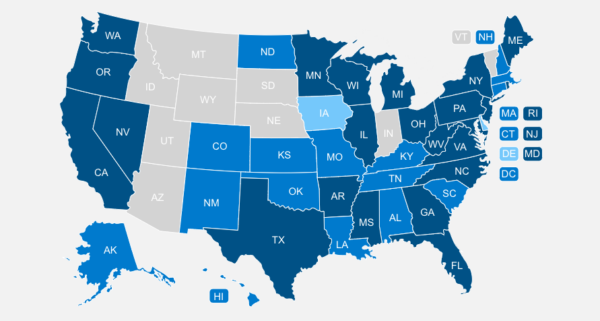

![Your 501(c)(3) Approval Guaranteed{{ include_custom_fonts({"Museo Sans":["Bold","Bold Italic","Regular","Regular Italic"]}) }}](https://no-cache.hubspot.com/cta/default/560178/interactive-194101957210.png)
![Start Your Nonprofit with Confidence{{ include_custom_fonts({"Museo Sans":["Bold","Bold Italic","Regular","Regular Italic"]}) }}](https://no-cache.hubspot.com/cta/default/560178/interactive-194101957151.png)



